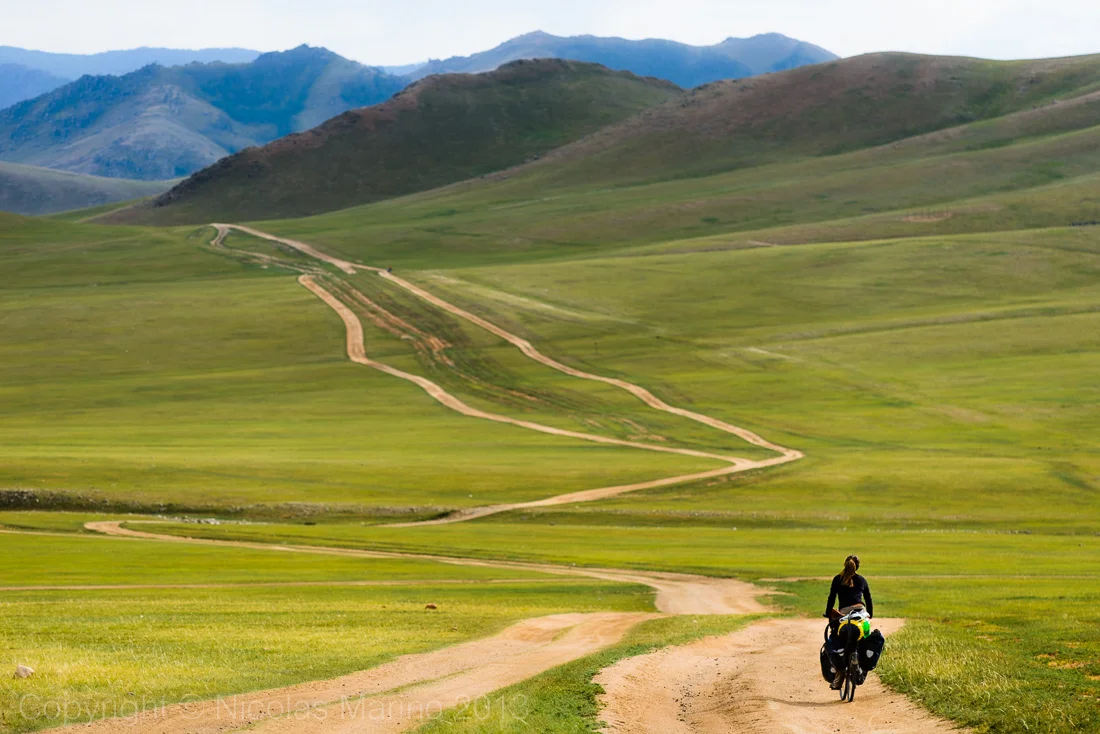Horses are used for all the daily activities of the nomads. Herding cattle through pastures, moving around the steppe, using them as means of transportation to subdue other untamed horses, etc. Mares, in turn, are the source of the national drink, airag, a typical alcoholic drink of Central Asia made off the fermentation of their milk. As in Kyrgyzstan, where at each yurt I stopped, nomads would offer me Kymus, here they offered us the Mongolian counterpart, the airag. Rejecting it is not an option. It is rude and of extremely bad education to reject what a Mongolian nomad offers you. It's not an obligation to finish everything you are offered, but it is a must to accept it and at least try it. There were so many times we were invited airag that after a month, I began to enjoy the taste of this initially disgusting drink.
With the last sunsets in this land of amazing riders we began to say goodbye to the steppe and started the stretch that we imagined as the toughest of the whole country, crossing the Gobi desert.












